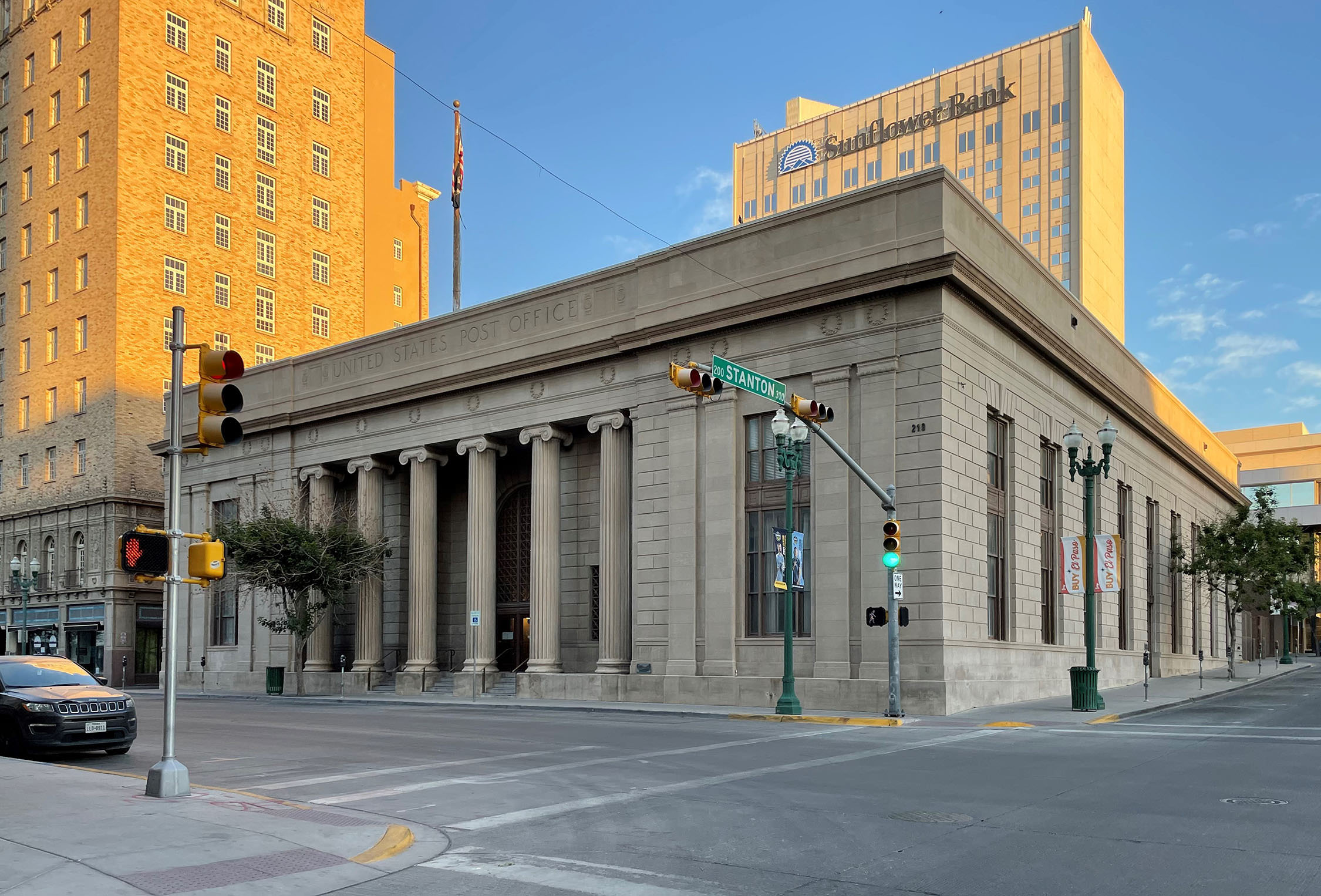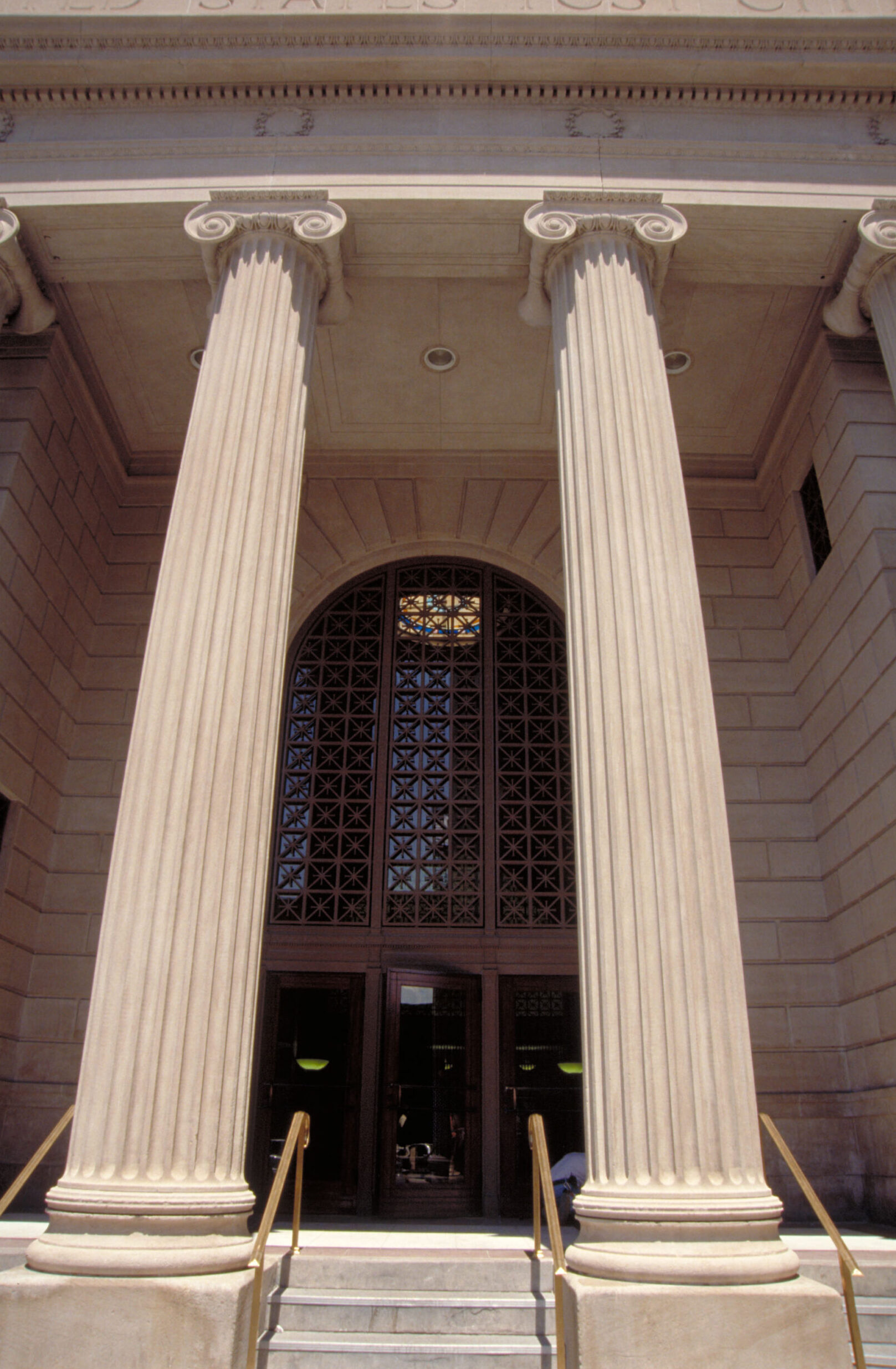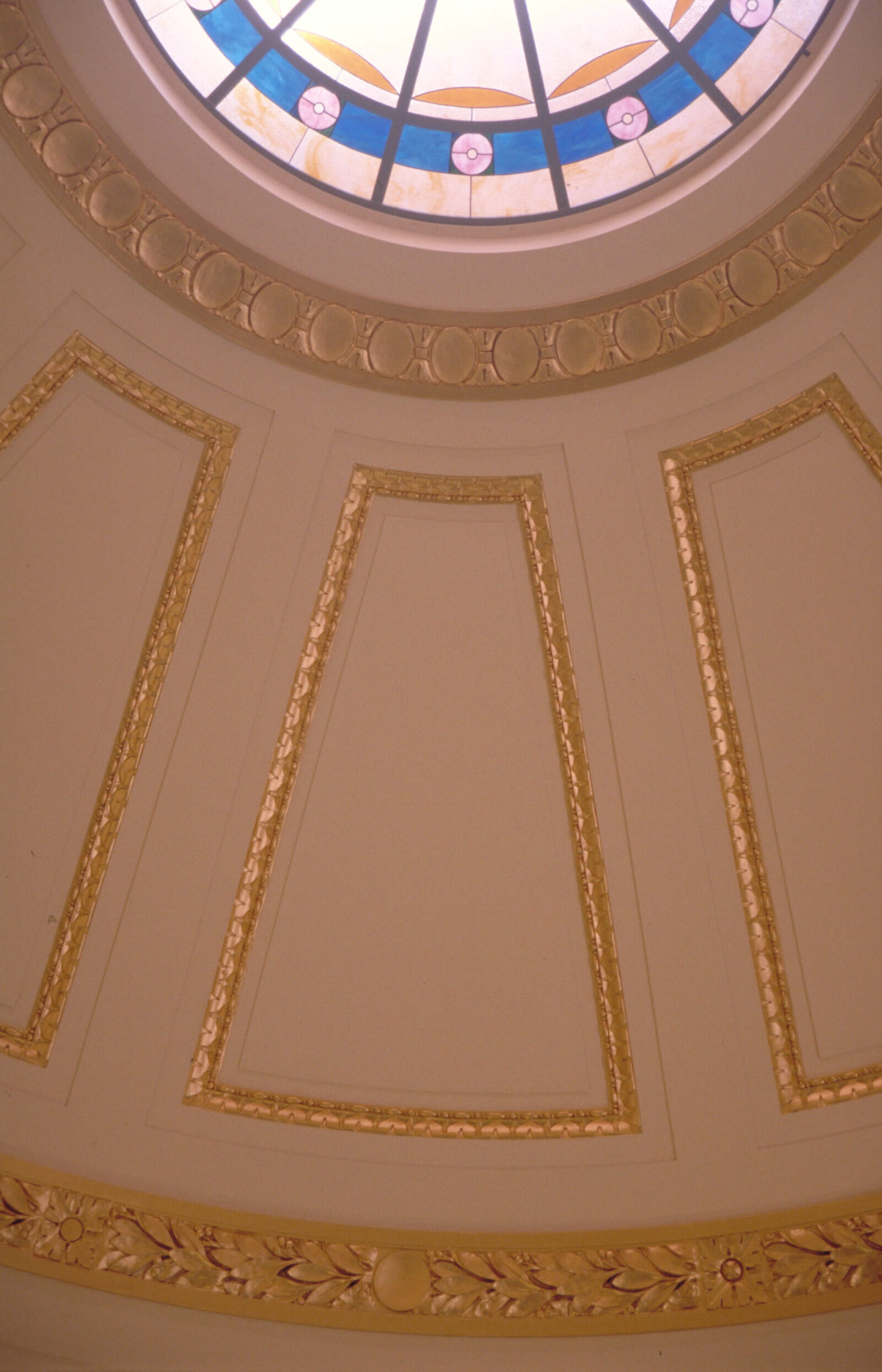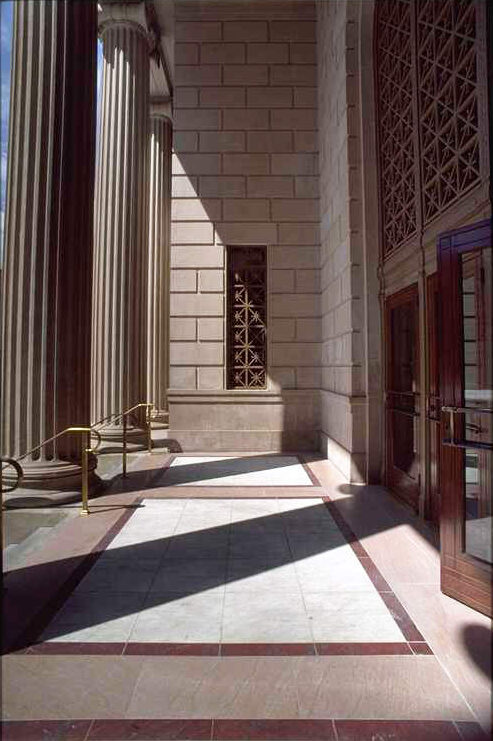at the USPS Downtown El Paso Station
Constructed around 1916, the USPS Downtown El Paso Station is a Beaux-Arts federal building that served as a prominent symbol of El Paso’s growing civic importance in the early 20th century. Designed with classical proportions, rich detailing, and high-quality materials like Indiana limestone and ornamental metals, it stands today as a rare architectural landmark in the region. One of its most defining interior features is the stained-glass dome that graces the central lobby.

Beaux-Arts Influence
The dome exemplifies Beaux-Arts ideals with its decorative complexity and emphasis on natural light. Positioned over the postal lobby, it acts as a central skylight, flooding the space with colored light and enhancing the classical interior finishes.
Design & Craftsmanship
The dome features intricate stained-glass panels arranged in a radial, geometric pattern. Surrounding it are ornate plaster moldings painted with gold leaf paint, which highlights the form and reflects light against the colored glass. The stained glass itself is held in metal frameworks, replicating traditional construction methods.
Symbolism & Function
Beyond its visual impact, the dome symbolizes transparency, civic virtue, and public illumination—values deeply embedded in early 20th-century federal design. Functionally, it reduces the need for artificial lighting during the day while providing a welcoming focal point for visitors.
Historic Changes & Restoration
Originally installed around 1916, the stained-glass dome was a central decorative and functional element of the building. During renovations in the mid-to-late 20th century (likely between the 1960s and 1980s), the original glass was removed and replaced with acrylic panels, a common practice at the time due to concerns about safety and maintenance.
During BRW’s preservation project, the plastic dome was removed, and the stained-glass dome was replicated using historically appropriate materials and techniques. The clear-glass skylights above the dome, which protect it from the exterior, were also replaced as part of this restoration.

Period-Appropriate Color Palette
Stained glass in early 20th-century Beaux-Arts buildings often featured muted, harmonious tones rather than bold hues, designed to complement classical interiors. For the El Paso dome, colors included:
These colors were selected for their ability to provide elegance without overpowering the surrounding architecture. The glass was also chosen for its subtle tonal and textural variations, in keeping with the original design.



The dome restoration followed a “Conservation and In-Kind Replacement” methodology. This involved:
1. Historical Research:
Original architectural drawings were reviewed to understand the dome’s design, proportions, and construction details. While documentation of the original color palette was not available, the restoration team selected colors based on materials and styles commonly used during the period, ensuring a historically appropriate and visually cohesive result.
2. Use of Kokomo Opalescent Glass (KOG):
Glass from Kokomo Opalescent Glass—a historic manufacturer operating since 1888—was used in the dome’s reconstruction. Known for its hand-blown opalescent glass, Kokomo was a favored supplier during the Beaux-Arts era and is still widely used in preservation for its historic authenticity and visual accuracy.
This restoration approach met the Secretary of the Interior’s Standards for Rehabilitation, ensuring the work preserved the building’s historic character while restoring its most iconic interior feature.
In addition to the dome, the broader restoration project included cleaning and repairing the Indiana limestone façade, restoring the marble porch, refurbishing original bronze light fixtures, and preserving the interior’s historic marble finishes and decorative plasterwork. We used photo documentation of the exterior façade to describe the exact historic restoration scope of work such as repairing the existing Indiana limestone and careful demolition required to not damage significant history in the process. This visual analysis supported decisions related to material conservation and construction sequencing during restoration. Aluminum doors that had replaced the originals were removed and custom brass doors, appropriate to the building’s original design, were installed. Together, these efforts have allowed the building to remain in active use while honoring its architectural and civic legacy.
This research was used to apply what we learned to the historic downtown Dallas USPS restoration project.
Lessons from El Paso’s dome restoration informed strategies in Dallas, ensuring a context-sensitive and historically grounded preservation process.
This visual analysis supported decisions related to material conservation and construction sequencing during restoration.